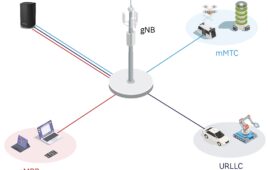Last month, members of the mobile community gathered in London for the annual 5G World conference. As part of the larger London Tech Week’s headline show, TechXLR8, this conference gave attendees the chance to focus solely on 5G. Event discussions focused on upcoming and current field trials and strategies for transitioning from LTE to 5G.
Attendees at this year’s event were most interested in learning about optimization of bandwidth, open interfaces, software defined techniques, and preparing for 5G infrastructure. The leading connection between these topics is that the industry itself is being choked by the control of three leading vendors: Nokia, Ericsson, and Huawei. Many discussions referenced the fact that the industry must move away from their strong influence to advance towards the technologies required to be fully prepared for 5G.
Movement towards 5G
It’s no surprise that discussions revolved around how to make the industry 5G ready. Many providers invested time and resources into building out their LTE and 4G offerings, but are now beginning to consider the future of 5G architecture.
Through optimization of the network, as the architecture is prepared for 5G, networks will be more prepared for the further influx of consumer demands for data and quality user experience. The key to optimizing the industry for 5G is to begin with technologies that use minimal power and bandwidth, and then grow. Attendees certainly identified that there is pressure on the industry to open the interface that has been controlling the growth of the industry, consolidation of vendors and most importantly, the growth towards 5G.
Control of the space has been achieved through the RAN interface and is currently in the hands of a few leading vendors, which holds back movement towards optimizing bandwidth and everything that gets deployed on the tower needed in preparation for 5G. Innovation comes from many players, all investing their efforts towards creating the best capabilities and uses of the network. The industry can’t wait for the slow movement of these vendors with the one solution fits all and customers will only continue to ask more from networks, requiring even more capabilities and innovation than 4G.
Smaller Networks
Many panel sessions focused on the vision of smaller networks. Now that the function of the network has been virtualized, they can be placed on a simple compute node and located where needed rather than in the core, as currently deployed. Vodafone envisions thousands of small networks going forward, which is being driven by new small operators that can use unlicensed spectrum and the deployment of Internet of Things networks.
Currently, the industry is taking all virtualized elements and crunching them down on a smaller scale – which is the reverse of past trends – so the whole network can all be put on one blade compute engine. Network Function Virtualization (NFV) and signaling specifically allow new entrants into the space as they allow for greater benefits through proven reliable NFV functions in deploying their own network. Unfortunately, the existing interface makes it difficult for many players to enter the larger developed market space. Instead, smaller networks will have more technological advancement and a greater pool of vendors to provide similar if not better offerings than the larger networks like AT&T and Verizon.
The move away from hardware
The Cloud RAN market is primed and ready for disruption, especially in terms of its reliance on hardware. But since it is the core of legacy vendors’ businesses, Nokia, Ericsson, and Huawei won’t let this happen very easily. Their corner of the market is focused on hardware, including antenna and remote radio units (RRU). They are currently in the position to protect their hardware designs as well. The industry is instead calling for the open sourcing of the hardware and open design APIs. This will allow other companies to take the stage and properly disrupt the market.
As these vendors have continued to focus on their own hardware, the telecom industry is also moving away from relying solely on hardware itself. Vendors are apt to make all software available via the cloud so that customers can just turn on the features with their need. Top vendors are now in a challenging situation because they support a big hardware cost structure. To survive they may look to become software companies, requiring a massive restructure. Only time will tell how they will move forward, though, taking in the fact that obvious reductions in revenue will certainly stop them from completely moving away from the hardware space.
The takeaway
It was clear from discussions at 5G world that the telecom industry is changing. Ten years ago, only large players were accepted in the industry – that model has evolved. The likes of Facebook, WhatsApp, and Google all currently offer messaging and players certainly don’t have to be a huge provider any longer to innovate and gain consumer attention. Each new company (whether it be an over-the-top application or telco provider) offers advances that the industry very much needs on its way towards 5G. The event truly showed that it is possible to produce very telecoms-centric applications without being large and operators are now realizing this.
John Baker is SVP of Business Development at Mavenir, a software-based networking provider.




